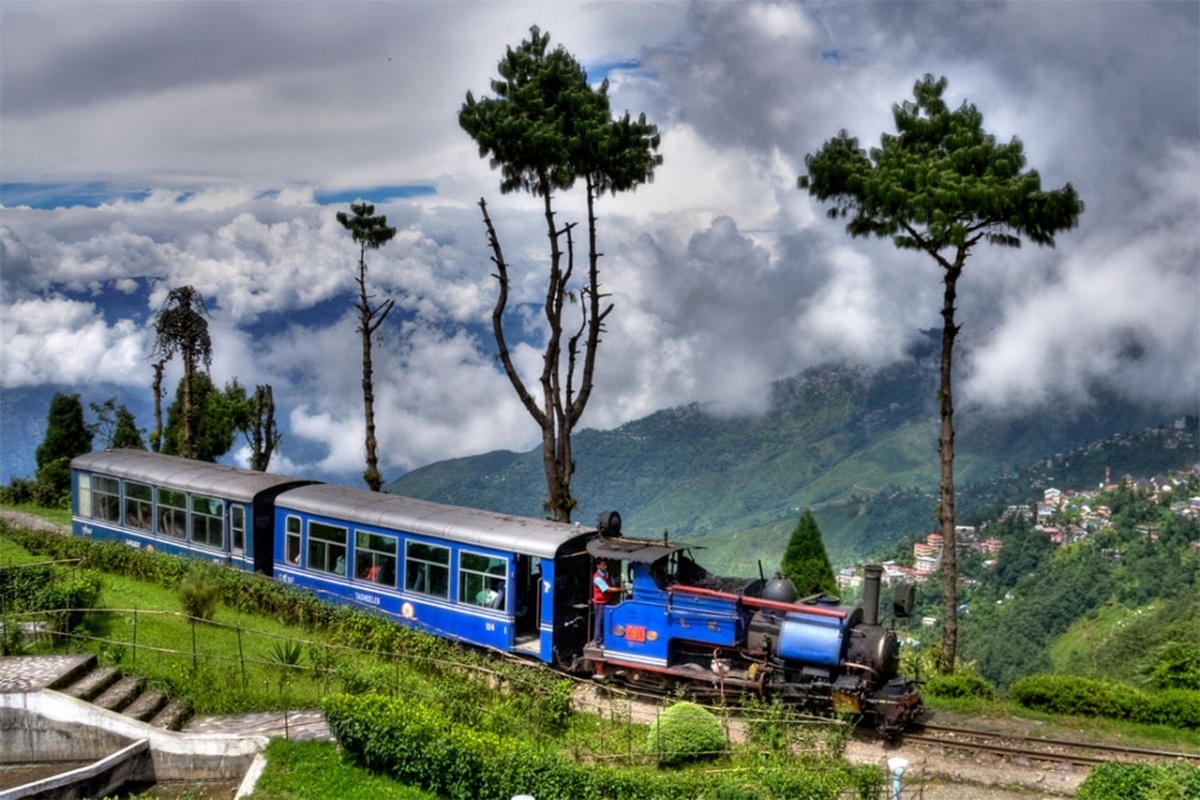Golden era of film shooting returning to Kashmir: LG Sinha
Sinha made the announcement while inaugurating the shoot of an upcoming TV show, 'Pashmina' in Srinagar.
Attracting tourists from all over the world who don’t want to miss the mesmerising romance of the toy train ride through the hills criss-crossing the Hill Cart road, the DHR also helped people to earn money for their livelihood.

Film shooting consent process in world heritage Darjeeling Himalayan Railway goes digital.
The Indian railway’s authorities have initiated the process to give permission digitally to make films and documentaries on Darjeeling Himalayan Railway (DHR), a UNESCO World Heritage site, which is also known across the world for its fascinating journey through the hills of the Himalayas in narrow gauge toy trains.
Northeast Frontier Railway (NFR) Chief Public Relations Officer (CPRO) Subhanan Chanda said that the decision of online process of scrutinizing applications and to give permission in a digital mode was taken to facilitate and encourage making more films on DHR, which was included in the World Heritage Site list in 1999.
He said that before the new online initiative, officials of the film production houses or documentary filmmakers from different parts of the country and abroad had to come physically several times to NFR headquarters in Maligaon near Guwahati before finally going to Darjeeling for shooting.
Advertisement
“Sometimes they had to reschedule a pre-fixed shooting program also. In order to mitigate the issue, the NFR has now provided a link to their official website (https://nfr.indianrailways.gov.in/).
“Any film producer or enthusiast from any part of India and abroad keen to undertake film shooting either using the toy train or railway premises in DHR can now apply online without physically coming to the shooting sites or NFR offices,” Chanda said.
“Film producers can also deposit the requisite fees required to be submitted before undertaking the shooting online. Fees are required if the shooting is to be done for commercial purposes and there will be no charges if the shooting is to be undertaken for non-commercial, academic, and awareness purposes.”
The new system would facilitate the filmmakers of India and other countries to plan for shooting within a much shorter time period than earlier, the CPRO said adding that as the entire process can also be monitored by the applicant, it brings about transparency and ease of doing business with railways.
Giving details of filming in DHR, the official said that over the decades, shooting of a large number of Bollywood, Tollywood, and other Indian states films were done in Darjeeling areas.
Some of the famous Bollywood films which were shot in Darjeeling include Jab Pyaar Kisi Se Hota Hai (1961), China Town (1962), Aradhana (1969), Raju Ban Gaya Gentleman (1992), Parineeta (2005), Barfi (2012) and Jagga Jasoos (2017).
“Lots of short films and television serials were shot in DHR over the decades. In January this year, a documentary film on Nobel laureate Mother Teresa has also shot on-board a toy train from Siliguri junction to Kurseong,” the NFR official said.
He said that although the complete section of DHR is a cherished location for the shooting films and documentaries, some of the most preferred locations on DHR are Batasia Loop, Agony Point, Ghoom Station, Darjeeling station, Mahananda Wildlife Sanctuary between Sukna and Rongtong stations.
Attracting tourists from all over the world who don’t want to miss the mesmerising romance of the toy train ride through the hills crisscrossing the Hill Cart road, the DHR also helped people to earn money for their livelihood.
Chanda said that the World Heritage Committee of UNESCO, at its 23rd session held at Marrakesh in Morocco on December 5, 1999, decided to inscribe DHR on its World Heritage Site list.
Work on the narrow gauge DHR, which covers 88 km from West Bengal’s New Jalpaiguri to Darjeeling, was completed between 1879 and 1881.
The NFR, one among the 17 railway zones in India, operates fully and partially in six of the eight northeastern states, excluding Meghalaya and Sikkim, and in seven districts of West Bengal and five districts of north Bihar.
Advertisement